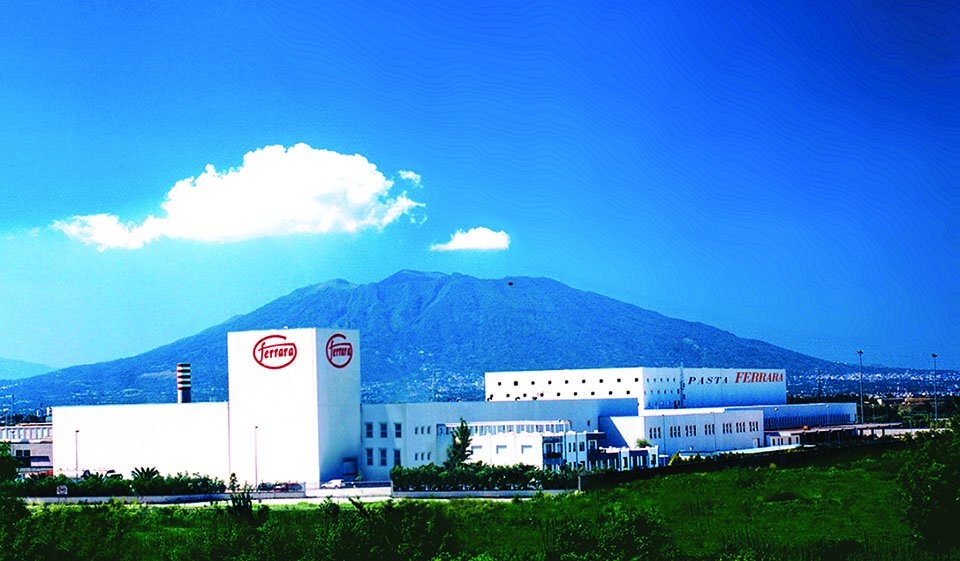
Raw materials for the production of functional pasta
10 February 2015 Off By PastariaPasta has recently been studied and in certain cases used by the industry to deliver, through diet, compounds that are beneficial for health such as fructooligosaccharides, beta-glucans, insoluble fibre, minerals, proteins and antioxidants.
by Paola Florio, Roberto Ranieri and Silvia Folloni (Open Fields)
Functional foods may be defined as “any type of food consumed in the staple diet which, in addition to basic nutritional functions, also proves to have physiological benefits”. In particular, pasta, which is a basic food for a large part of the world – due to its versatility, ease of transport, handling, storage properties, availability in countless shapes and sizes, high digestibility, good nutritional qualities and relatively low cost – presents characteristic structural properties which make it a very appropriate matrix for the adding of functional ingredients. It is traditionally produced from durum wheat semolina and is considered a food with a low glycaemic index thanks to its slow sugar release during digestion, which reduces glycaemia and hence insulin response (Granfeldt et al, 1991). Pasta has recently been studied and in certain cases used by the industry to deliver, through diet, compounds that are beneficial for health such as fructooligosaccharides, beta-glucan, insoluble fibre, minerals, proteins and antioxidants.
Prebiotics and probiotics in pasta
Prebiotics are “ingredients that allow specific changes both in the composition and/or in the activity of the gastrointestinal microbiota that confers benefit upon host wellbeing and health” (Gibson, 2004). A substance is defined as a prebiotic if it meets the following criteria:
- resistance to digestive processes in the upper part of the GI tract;
- fermentation by intestinal microbiota;
- selective stimulation of the growth and/or activity of a number of health-promoting bacteria in the colon, thereby improving human health.
The greatest advantage of prebiotics is their abundant presence in nature, predominantly in fruit and vegetables.
Today, the prebiotics most widely studied for the development of functional pasta varieties are fructooligosaccharides and beta-glucans. These are part of soluble fibre. Numerous studies have demonstrated the positive effects on human health of functional pasta containing prebiotics. In fact, they do not only have the power to promote the proliferation of “good” intestinal bacterial flora and hence demonstrate protective effects that safeguard the colon from the risk of the onset of tumours, but also to reduce the fat content in the bloodstream inasmuch as they inhibit “de novo” fatty acid synthesis and the esterification of fatty acids in triacylglycerols. And that’s not all. Their fermentation leads to the formation of short-chain fatty acids which generate a decrease of the pH in the intestinal lumen, thereby improving the absorption of minerals, including calcium (Padma and Prabhasankar, 2014).
Pasta with FOS
Among the prebiotics, fructooligosaccharides (FOS) are oligosaccharides of fructose (2-9 units) connected by beta-glycosidic bonds (1-2), at the extremity of which there is an alfa-D-Glucose unit. They are soluble fibres of great interest, not only for their health-promoting properties but also for their economic potential, given the fact that they are 0.4-0.6 times sweeter than saccharose. For this reason they are also used in the pharmaceutical industry as sweeteners (Biedrzycka and Bielecka, 2004).
These “sweeteners/prebiotics” are not cariogenic and they reduce cholesterol, phospholipids and triglyceride levels in the blood (Tokunaga et al, 1986). They also promote the intestinal absorption of calcium and magnesium and are low in calories. They act as prebiotics, favouring the growth of bifidobacteria in the colon (Moore et al, 2003) and inhibiting the growth of microorganisms that are damaging for the intestine, helping reduce the risk of tumours of the colon. They are also employed in the formulation of products for diabetics (Gibson and Roberfroid, 1995; Sanchez et al, 2010).
Functional pasta enriched with FOS and fibre can be obtained from a mixture of semolina and unripe durum wheat harvested when still green and subsequently dried. In fact, the unripe wheat kernels, in contrast with the fully ripe ones, present FOS levels that are 2-3 times greater (Escalada and Moss, 1976), higher levels of total fibre and soluble sugars, and proteins with a more balanced essential amino acid composition (particularly lysine). The total protein content of the unripe grain is similar to that of ripe grain, but the levels of albumin and globulin are higher, while gliadin and glutenin levels are practically non-existent, making it impossible to form the gluten network. For the preparation of the pasta, therefore, it is important to formulate mixtures of semolina and unripe durum wheat which guarantee that technological quality is maintained. Moreover, the addition of milling products rich in FOSs to standard semolina changes the pasta’s cooking time which is reduced, lowering the degree of gelatinisation of the starch because the particularly hydrophilic compounds withdraw water from the starch for gelatinisation, leading to a loss of resistance to over-cooking of the pasta (Rakhesh et al, 2014). Interesting prototypes of functional pasta have been obtained with mixtures containing up to 30% of unripe grains (Pagani et al, 2003; Casiraghi et al, 2013). The colour of the pasta with unripe grain is conditioned by the presence of more soluble sugars and increased alfa-amylase activity which cause browning during the drying phase. The quality of this pasta during cooking is similar to that of standard semolina pasta. The FOS content of the pasta after cooking is halved due to the solubility of the FOSs in the cooking water (D’Egidio et al, 2005).
Pasta with beta-glucans
Beta-glucans (or beta-glucans) are linear polysaccharides consisting of glucose molecules connected by glglycosidic bonds beta (1-3) and beta (1-4). They are the most important components of the soluble dietary fibre fraction which produces a viscous solution, inhibits the passage of the chyme through the intestine, obstructs gastric emptying, reduces the absorption of glucose and sterols in the intestine and blood cholesterol, blood glucose and the contents of insulin in the body. beta-glucans are important compounds for the maintenance of a number of biochemical blood parameters, they are responsible for the lowering of total and LDL cholesterol and for the increase in the total cholesterol/HDL cholesterol ratio, reducing the risk of coronary and ischaemic heart disease (Havrlentova et al, 2011). Among the cereals, barley and oats have the highest contents of beta-glucans. The European Food Safety Authority (EFSA) has approved some health claims (see section “What are nutritional and health claims?”) for the beta-glucans in barley and oats. These claims may be used by the food industry to communicate the benefits for human health of its own products. It is, in fact, permissible to communicate that “beta–glucans contribute to the maintenance of normal blood cholesterol levels”. This indication can only be used for a food that contains at least 1 g of beta-glucans deriving from oats, oat bran, barley or barley bran or from mixtures from these sources per quantified portion. This claim must be accompanied by consumer information specifying that the beneficial effect is obtained from a daily intake of 3 g of beta-glucans deriving from oats, oat bran, barley or barley bran or from mixtures of these beta-glucans. It is also possible to use the claim “barley beta-glucans contribute to lowering blood cholesterol levels. High cholesterol is a risk factor for the development of coronary heart disease.”. It must be specified to consumers that the beneficial effect is obtained with a daily intake of 3 g of barley beta-glucans. This claim can be used for food products that contain at least 1 g of barley beta-glucans per quantified portion. The effect on post-prandial glycaemia can also be communicated. It is, in fact, possible to declare that “consumption of beta-glucans from oats or barley as part of a meal contributes to the reduction of the blood glucose rise after that meal”. In this case the food must contain at least 4 g of barley or oat beta-glucans per 30 g of carbohydrate available in a quantified portion during a meal.
There is already functional pasta on the market that uses these approved claims regarding beta-glucans.
Functional pasta enriched with beta-glucans can be obtained from mixtures of semolina and barley and/or oat flours enriched with beta-glucans. These milling products are obtained from barley or oats through fine grinding (micronisation) and subsequently by applying air fractionating techniques that make it possible to obtain fractions of different particle sizes characterised by very different chemical compositions. Through air classification, it is possible to obtain barley flours containing increasingly higher concentrations of beta-glucans, up to 12-15% with a yield of approx. 30% (Ferrari et al, 2009). In the case of oats, it has been demonstrated, also at an industrial level, that if, prior to air fractionation, a supercritical CO2 lipid extraction treatment is carried out, even higher levels of beta-glucan enrichment can be achieved – of up to 33.9% against 17.1% in absence of the lipid extraction treatment (Sibakov et al, 2011). Depending on the concentration of beta-glucans in the enriched flour, in order to prepare functional pasta eligible to use the approved claims, these fractions must be used in proportions of 15- 20% in mixtures with durum wheat semolina. [hidepost]
Thanks to the “Passworld – pasta and health in the world” project, in 2013 the Council for Research and Experimentation in Agriculture (CRA) launched a functional pasta containing prebiotics and probiotics.
Probiotics are “live microorganisms which, when consumed in adequate amounts, confer a health effect on the host” (FAO/WHO 2001) Fig. 2.
A microorganism is considered a probiotic if it meets the following requirements. It must (Morelli et al, 2007):
- be safe for use on human beings;
- not be a carrier of acquired and/or transmissible antibiotic-resistance;
- be alive and viable at an intestinal level in quantities such as to justify any beneficial effects observed in efficacy trials;
- be able to persist and multiply in the human intestine;
- be able to confer a physiological benefit demonstrated according to the criteria shown in the following process (FAO/WHO document on the evaluation of probiotics in food).
This functional pasta prototype was made from milling products rich in vitamins, antioxidants and high quality proteins, obtained from durum wheat dehusked and ground with a stone mill, supplemented with an ingredient rich in barley beta-glucans and spore forming lactic acid bacteria with the power to withstand high cooking temperatures for cooking times of around 6 minutes. The ingredient referred to consists of lactobacilli which, in addition to exercising the beneficial effects common to lactic acid bacteria probiotics, remain viable for the entire life of the product: from the making to the cooking of the pasta, through to gastrointestinal transit after ingestion. Currently underway at the Department of Food Science of the University of Parma, is a study on 40 volunteers to evaluate “in vivo” effects, measuring inflammatory markers, lipid and glucose profile and effects on the intestinal environment.
Pasta with aleurone
In wheat, aleurone is the outermost layer of the amylaceous endosperm and constitutes 5-8% of the entire kernel. However, since with grinding it remains attached to the hylaline layer, it is separated from the endosperm together with the outermost layers of the bran and for this reason it is considered as part of the bran. The aleuronic layer of wheat is composed of a single layer of cells and is particularly rich in nutrients: proteins, minerals, phytates, B-complex vitamins such as niacin and folates, and lipidic compounds such as sterols (Buri et al, 2004; Hemery et al, 2011; Pomeranz, 1988). Aleurone supplies approx. 15% of total grain proteins and 30% of total lysine (the first limiting amino acid in wheat). At least 80% of total niacin is found in the aleuronic layer. Approx. 40–60% of the mineral content is supplied by the aleuronic layer. We can therefore affirm that this is the layer that contains the highest concentration of bioactive compounds, as well as having a lighter colour and sweeter flavour than the rest of the bran. The use of aleurone-enriched durum wheat bran fractions in the preparation of pasta creates pasta with a high content of total fibre that provides a source of minerals such as zinc, phosphorus, iron and magnesium, and B-complex vitamins (vitamin B3 and B9), and thus the respective nutritional and health claims can be used. For durum wheat pasta, the separation of the aleuronic layer from the rest of the bran is achieved first and foremost through dehusking (a technique widely used in durum wheat grinding mills) followed by the phases of fractionation through filtration, air classification or electrostatic separation (Brouns et al, 2012). Many of these technologies were developed thanks to a European research project which lasted from 2005 to 2010, entitled Healthgrain (https://www.healthgrain.org/about_the_project) and industrially validated by the subsequent project HealthBread (www.healthbread.eu). The enrichment thus obtained makes it possible to produce fractions containing 50-70% of the aleuronic layer.
High Amylose Pasta
The main component of the wheat kernel is starch, approximately 70-80% of which is composed of amylopectin and 20-30% of amylose. Amylopectin is a highly-branched, easily digestible polysaccharide while amylose forms only a few branches, giving origin to complexes that are resistant to digestion and which mimic the behaviour of dietary fibres, for which reason it is assimilated to resistant starch.
Currently under experimentation for the production of pasta is a high amylose semolina obtained through conventional breeding techniques which have made it possible to achieve a increase in amylose of up to 40% (Hazard et al, 2012).
The pasta obtained from the use of high amylose semolina should present technological and nutritional advantages:
- greater firmness during cooking;
- high capacity to withhold fat, given the formation of a network of hydrogen bridges between the amylose chains which create an apolar cavity with the power to maintain within it the fats present in the food matrix (for this reason, these fats are defined as having: LAM i.e. “lipid amylose complexed”);
- poorer digestibility which results in a greater substrate for useful intestinal bacteria and also in a reduction in the glycaemic index;
- higher total fibre content thanks to the greater presence of amylose which is quantified with the “resistant starch” fraction.
Studies on the genetics of durum wheat starch are very recent so a few more years are going to be needed prior to their application in the new varieties.
In any case, despite the fact that the pasta obtained from high amylose wheat demonstrates excellent potential both in nutritional and technological terms, it is extremely important today, in addition to the functional aspect, also to add the “time factor”, with a view to reducing total process/product energy savings (Pollini et al, 2012). For this reason, for the formulation of new ingredients for pasta, low amylase – or “waxy” – wheat varieties have also been taken into consideration. It is, in fact, possible to obtain varieties of wheat containing up to 100% amylopectin. These varieties have made it possible to obtain pasta prototypes with a low starch retrogradation tendency, which leads to a decrease of the crystalline structure of the starch. This means that these varieties can be used in the production of refrigerated and frozen products (Zhang et al, 2013; Graybosch et al, 2003), while with regard to dry pasta, prototypes with low cooking times (2-3 min) can be obtained – pasta thickness being the same – but with poor resistance to overcooking.
Protein-enriched pasta
In the United States a very widespread example of nutritionally enriched pasta is that of protein-enriched pasta. Ingredients with a high protein content can be added to the semolina in order to increase the protein content from approx. 12% to values equal or superior to 20% and improve the biological value of the proteins present. The raw material inputs are, in this case, soya, peas, beans, lentils and chick peas. From these raw materials it is possible to obtain flours, precooked flours, concentrates and protein isolates, useful for the formulation of high-protein foods. Also in this case, the adding of these ingredients represents a compromise between the nutritional improvement desired and the sensory and functional characteristics of the finished product. In Italy, this type of pasta is limited to the slimming product market due to its cooking performance and sensory qualities which frequently do not meet consumers’ expectations. In any case, interest towards the development of this type of product is growing in Europe due to the need to increase the consumption of proteins alternative to animal proteins in the human diet. This need wishes to respond to a growing demand for proteins on a worldwide scale (FAO, 2011). An increase in the production of animal proteins is difficult as it is already close to its maximum capacity, and it is not even desirable from the environmental standpoint, given the fact that the animals are not sustainable and efficient converters of the energy they consume (FAO, 2011). Moreover, the substitution of animal proteins with other sources of protein, including vegetable proteins, seems to be associated with a lower mortality risk (Pan et al, 2012).
[/hidepost] Download the magazine
 PASTARIA DE (digital edition) 2014 n. 6 (ITALIANO) (10.8 MiB, 2,195 download)
PASTARIA DE (digital edition) 2014 n. 6 (ITALIANO) (10.8 MiB, 2,195 download)
Registrazione necessaria. Sign-up to download.
 PASTARIA INTERNATIONAL DE (digital edition) 2014 no. 6 (ENGLISH) (12.3 MiB, 9,967 download)
PASTARIA INTERNATIONAL DE (digital edition) 2014 no. 6 (ENGLISH) (12.3 MiB, 9,967 download)
Registrazione necessaria. Sign-up to download.


